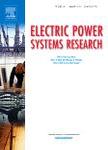版权所有:内蒙古大学图书馆 技术提供:维普资讯• 智图
内蒙古自治区呼和浩特市赛罕区大学西街235号 邮编: 010021

作者机构:Nanjing Univ Posts & Telecommun Inst Adv Technol Carbon Neutral Nanjing 210023 Jiangsu Peoples R China Nanjing Univ Posts & Telecommun Coll Automat & Artificial Intelligence Nanjing 210023 Jiangsu Peoples R China
出 版 物:《ELECTRIC POWER SYSTEMS RESEARCH》 (电力系统研究)
年 卷 期:2023年第225卷第1期
核心收录:
学科分类:0808[工学-电气工程] 080802[工学-电力系统及其自动化] 08[工学]
基 金:National Natural Science Founda-tion of China (NSFC) [61833008, 62293500, 62293504, 62303236] Natural Science Foundation of Jiangsu Province (NSFJP) [BK20210589]
主 题:Virtual power plants Electric vehicles aggregation Bi-level dispatch Clustering algorithm Information entropy Silhouette metric
摘 要:The rapid growth of electric vehicles (EVs) imposes great challenges to the flexible management and economic dispatch of virtual power plants. To overcome these obstacles, this paper proposes a bi-level economic dispatch strategy based on EVs aggregation. First, an aggregation method based on improved artificial bee colony Kmeans clustering algorithm is presented to aggregate the EVs with different dynamic characteristics in the upper level. Aiming at the issue that multi-parameter weights and aggregation effects are difficult to determine in the clustering process, information entropy and Silhouette metric are proposed to enhance the accuracy of clustering. Furthermore, pre-dispatch is conducted based on aggregation information and electricity market prices. Next, in the lower level, the charging demands information is utilized to formulate specific dispatch strategies for EVs users, and the pre-dispatch deviation in the upper level is modified. Finally, the simulation results show that the proposed aggregation method improves the clustering effect by 22.4% and guarantees the quality of aggregation and the flexibility of system management. Besides, the proposed strategy can reduce the total system operation cost and the computation time by 5.83% and 55.95% respectively and ensure the economy of the system operation and the computational efficiency of the dispatch.